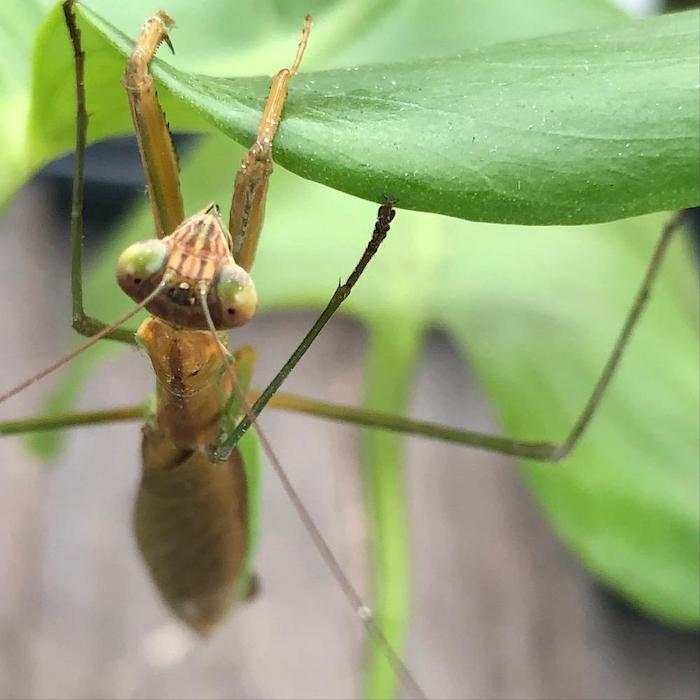[Spring 2022 - The first batch of Praying Mantis egg cases is in, so anyone from the winter and early spring pre-orders is welcome to come pickup (notifications have been sent... but sometimes emails go to junk folders). ]
Mantis egg cases contain 200 - 400 eggs, which hatch once the egg case is set outdoors in a sheltered location (once conditions are warmer/drier). Of the initial hatchlings, approximately six will mature and become the amazing creatures featured in the photo above! Praying Mantis are general predators and will eat many insects in the garden. They do not overwinter in Manitoba, so there is no chance of them becoming an invasive species here.
Ladybugs are, unfortunately, permanently discontinued. There are several reasons for this, but ultimately they have become unavailable in the industry in the last few years due to habitat issues and changes to the permitting process for their collection. This info led us to examine more closely how they are sourced... and it is clear that the popularity of commercially-sourced ladybugs has had a negative impact on their wild populations, clinching our decision to discontinue their resale even if they do become available again. Praying Mantis are 100% raised in insectaries and not taken from wild populations.
Of course, the best idea is to plan the garden in such a way that local beneficial insects take up residence, including ladybugs. Other popular and easy-to-attract beneficials include lacewings, hover flies, spiders and insect-eating birds. Planting a diversity of chemical-free nectar-loving flowers and flowering herbs is the easy place to start with this goal!

Brown Lacewing on Cardinal Basil... these lovelies are excellent aphid predators and eat many other types of soft-bodied pests.

Hover flies are another amazing little helper you can encourage to the garden... they love alliums and many other vivid flowers! In this case, it is the larvae of the hover flies that do all kinds of fantastic pest management on behalf of the gardener.
Top picks for attracting beneficials:
Alliums (flowering and edible types)
Cardinal Basil
African Blue Basil
Thai Basil
Calendula
Cilantro (when allowed to go to seed)
Dill (when allowed to go to seed)
Bees Friend (Phacelia)
Golden Chia
Comfrey
Gypsophila
Insectary Mix from Fruition Seeds
Lavender
Painted Sage
Snapdragons
Sunflowers
Thyme (flowering types)
Wild Carrot
Yarrow







